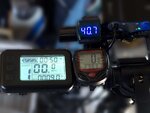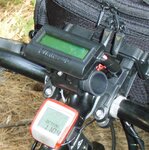steve marino
Active Member
I have a low end eBike that I really like, but it has one of those 5 red LED readouts for the battery's state of affairs. It's better than nothing, but just barely. I don't need a fancy Cycle Analyst because I'm not interested in real time constant power usage, but WOULD like to know the battery's actual power status. Is there anything on the market that would do that? Just an analog (preferably) or digital gauge that gave me an idea of how much power I had left at the end of a ride? Something simple like a gas gauge on a car. I know the analogy isn't the same, in a car w/ an ICE you have as much engine power with a full tank as w/ a quarter, but something along that line.
Last edited:




